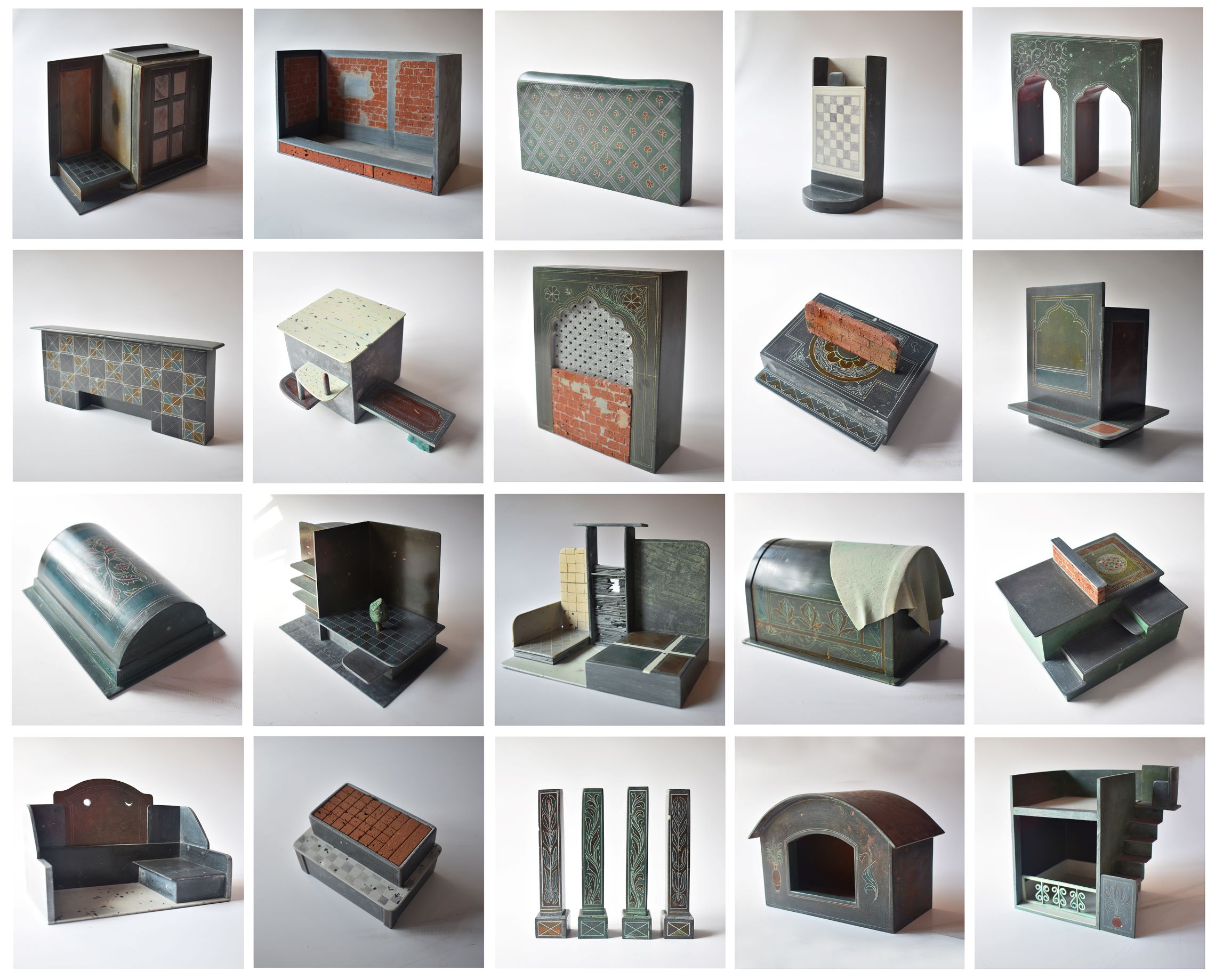
Kiran Nadar Museum of Art (KNMA) presents a new group exhibition titled ‘Inner Life of Things: Around Anatomies and Armatures’ curated by Roobina Karode, Chief Curator and Director, KNMA. The exhibition brings forth independent projects by 15 artists whose investigations are rooted in the concept of co-existence as well as the enigmatic life of objects and materials beyond human perception.
However, unravelling a world pre-dating or even outliving the time of humankind on earth, the exhibition proposes a radical ethic of co-existence uncorrupt by the hubris of man. It speculates a place where the animate and the inanimate communicate with each other free from our mediation and control. The works of art in the exhibition, even when they appear to be testifying to the artist’s craft and imagination, give primacy to the very inner workings of the art objects: the anatomies and armatures that give the world its shape and character.
The four-panel watercolour painting of Lahore-based artist Ali Kazim is executed in subdued shades and is inspired by the artist’s visit to the ancient Indus Valley Civilization excavation site near the river Ravi, and the ruins of culture it preserves. In her installation and video work, Vibha Galhotra weaves a visual interpretation of changing landscapes through metallic ghungroos, and presents a calming ritual with her potted sapling by redeeming it of all the burdens of the city borne dust and grit. Anindita Bhattacharya‘s acutely crafted lines of detailed organic clusters and foliage in earthy hues, executed in the tradition of Mughal miniature painting, prompt the viewer to find the hidden and intricate patterns in nature. The idea of traversing lesser-travelled terrains and vast expanses is explored in Shalina S Vichitra’s landscape with a thousand white flags, inspired by Tibetan Buddhist dictums and the spiritual harmony that they seek. Astha Butail’s take on ancient methods of archiving and the tradition of carrying oral histories through Vedic myths and metaphors marks an installation with minuscule prototypes of book-like objects.
Nibha Sikander’s hyperreal images of critters and moths are manifestations of the artist’s entomological interest that seeks to deconstruct the notions of natural history. Reena Saini Kallat presents the phantasmagorical within the natural world through her illustrations of morphologies of living organisms, suggesting an alternative evolutionary turn. Finding the threshold between nature and civilization in the ruins of agriculture, Shambhavi Singh searches for the materiality of existence beyond the confines of function and utility.
Debasish Mukherjee’s work is poetic in its nature of folding, stacking and meticulously arranging the fabric of the white sarees from his late grandmother’s collection which now bears the insignia in the form of digital print portraits on both sides of the stack. Rajendar Tiku’s small-scale works are the repository of a sense of belonging that is complicated by the melancholic ideas of homeland and the trauma of migration. Handling the tropes of migration and alienation is the work by Rathin Barman who investigates the intricacies of structural plans of houses that he moved from and into in order to locate the fragments of ownership and dissociation. They also give shape to the exhibition’s proposition on the inner life of things, an interior space that is made of the brute materiality of objects as well as the immaterial traces of spectral subjects. Dilip Chobisa rekindles the effect of assemblages neatly arranged in a grid. Often imitating structural drawings of engineers and architects, Kishor Shinde’s compositions create illusions of high rises under construction, bridges dissolving in air, or mobile towers blurring away into a smoggy horizon. Rahul Kumar & Chetnaa’s collaborative work resonates within urban surroundings and structures as the textured discs made in stoneware are arranged in a compact manner. Seher Shah and Randhir Singh’s cyanotype prints are careful studies of cityscapes and architectural motifs typical of the Brutalist style and the vestiges of an incomplete modernization.
Where: Kiran Nadar Museum of Arts, Noida
When: Till 30 November, 10:30 am to 6:30 pm
Rival leagues trigger players’ suspensions and a legal battle in Indian golf, for now
Former Delhi CM Kejriwal criticises Centre, Delhi govt over worsening air pollution, alleges AQI manipulation
Delhi Police raids Nangloi unit producing fake engine oil, seizes over Rs 1 crore worth…
Mukesh Sharma reimagines digital components as living matter in his solo exhibition ‘Decoding Digital DNA’
Nine accused were arrested in coordinated raids as police uncovered organised networks supplying mule bank…
Nearly 1.57 lakh PUC challans issued in two months as Delhi steps up GRAP enforcement…